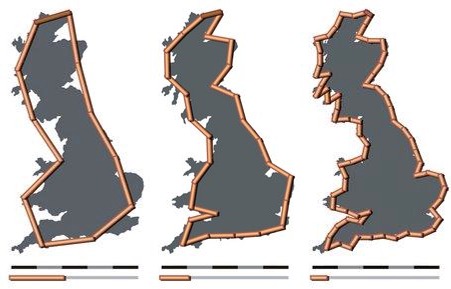We live in a golden age of online research and communication. The number ways to obtain information, many of which I covered last week, is staggering. Of course, simply having information is not enough. We must also be able to effectively organize, synthesize, and present our findings.
For years, I used an almost embarassingly rudimentary tool for storing references – Microsoft Word. I would read an article, catagorize its content, summarize it, and provide a link in my document. This level of organization can be sufficient, but I found it less than ideal for several reasons. My work remained at a standstill until I could return to my computer and access Word. There was no way to peer into the articles without clicking on the links. All sorting had to be done by hand.
I researched several web-based alternatives and one service rose to the top – Diigo. With just a couple clicks, the Diigo browser applet can save an article to your personal online library. In addition, you can add your own summary, highlight sections that interest you, and attach comments. You have the option to tag your article manually or accept Diigo’s intelligent recommendations.
Unfortunately, the Diigo mobile app is buggy. For storing and reading articles on the go, I like Pocket. While alternatives like Readability and Instapaper are certainly adequate, I prefer Pocket’s clean interface and stable design. Like Diigo, Pocket allows article tagging. Reposting to Facebook, Twitter, Evernote, Reddit, etc. is a breeze.
Because Pocket is better at logging and reading articles, while Diigo is better at annotating and sorting them, I bridge the two using a very cool application called If This Then That (IFTTT). Using a collection of simple “if this, then that” commands, you can create your own mobile recipes. For instance, you can command IFTTT to send you an email if your weather app says it is going to rain, or store results to a spreadsheet if certain items on Craig’s List go up for sale. My IFTTT recipe says that if I use the tag “diigo” on an article in Pocket, it will automatically appear in my Diigo library! For me, it’s a nice way to separate the “article search” and “deep research” aspects of the problem when I’m on the go.
If you are working with a group, there are a number of great options to help keep your content organized. One popular tool – if you’re willing to shell out a little coin – is Evernote. With Evernote, you and your collegues can create “notes,” which function a lot like Word documents.
Imagine attending a conference where interesting talks are happening simultaneously. Using Evernote, team members can attend different talks, summarize each in its own note, then tag and organize them into one or more “notebooks.” These can be shared privately with members of your network, quasi-publically with anyone possessing a generated link, or publically through social media sites. Evernote can also capture web articles, photos, handwritten notes, and offers attractive presentation capabilities.
If you’ve advanced to the task delegation stage, you may want to try BaseCamp. This service allows you to make to-do lists and assign who takes care of which item. Events and deadlines can be automatically linked to your personal calendar. BaseCamp also acts as a meeting point. It provides space to work collectively on documents. You can also schedule regular check-ins on topics of your choosing, like “What interesting things have you read in the last week?”
If you work within an organization, you may be able to disseminate your content through its blog, newsletter, website, or media team. For the less well-connected, you might try a personal blogging service like Tumblr, or one of the many image sharing sites like Pinterest. If you desire more control but don’t want to construct a website from scratch (like me), then creating a site through WordPress might be just the thing. Once you purchase your domain name and server space (from companies like BlueHost, pair Networks, etc.), all you have to do is install WordPress, select a theme, and customize using a large network of plug-in’s. One of the most useful is Yoast SEO, which optimizes your site for search engines.
Readership matters, and your content is more likely to be read if it contains images or videos. If you are unwilling to create your own, you can purchase some from sites like iStock and Shutterstock.
However, my preference is to avoid paying for images. The absolute best way to do this is through a copyright management system known as the Creative Commons (CC). People who are willing to let their images be used for free can assign to them a CC license that specifies how they may be used. You can then use Creative Commons Search to locate free images, music, and videos to incorporate into your own content.1You may notice that most of my banner images are taken from the Creative Commons and cited accordingly.
The popular photo sharing site Flickr has hundreds of millions of photos available under the Creative Commons. Pixabay has about a half million, but all can be used freely even for commercial applications. Personally, I have found it more efficient to search for images through Compfight, a web engine based off the Flickr API. In addtion to searching over the usual fields like keyword and text, Compfight also filters based on license, often the most useful field when assembling web content.
If all of this sounds like too much work and you’re willing to pay a monthly fee, you can try a service like Scoop.it, which uses a “selection engine” to scour the web for subject matter of your choosing. The real benefit of this service is that it curates your content for you, though you retain the ability to add information and edit the overall presentation. Once your content is conveniently organized, you can post it to all of your social media sites.
So in conclusion, these are some of the tools I prefer when organizing and presenting content on the web. No doubt I have missed many excellent alternatives, so if you have your own favorites, I invite you to share!
Featured image: “tech worker” by Wrote, used under CC BY-NC 2.0 / bottom of image has been cropped from original
Notes
| ↑1 | You may notice that most of my banner images are taken from the Creative Commons and cited accordingly. |
|---|









